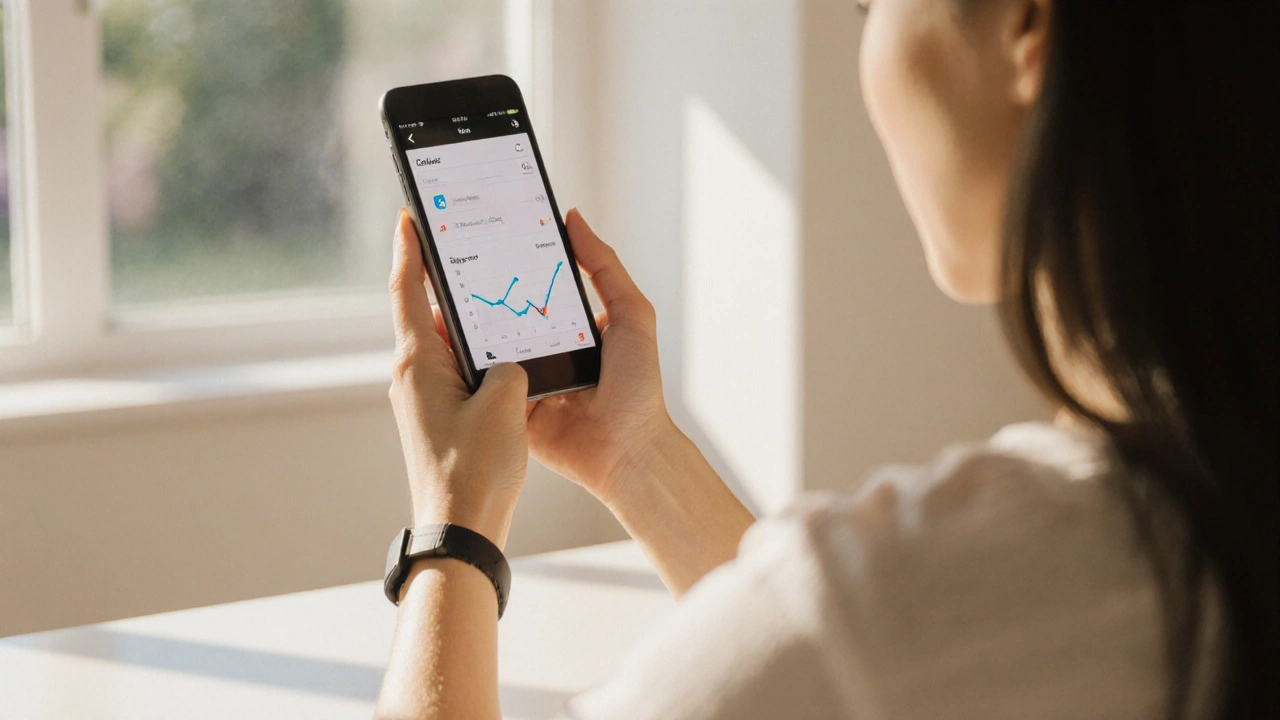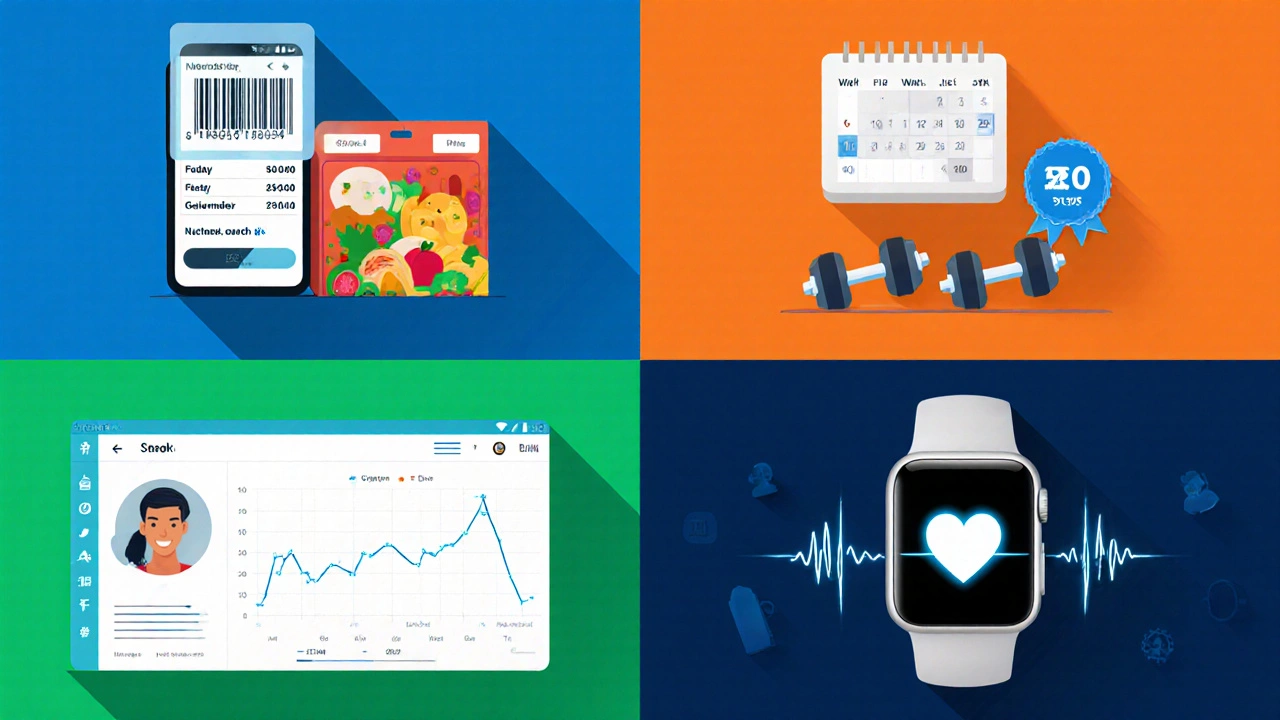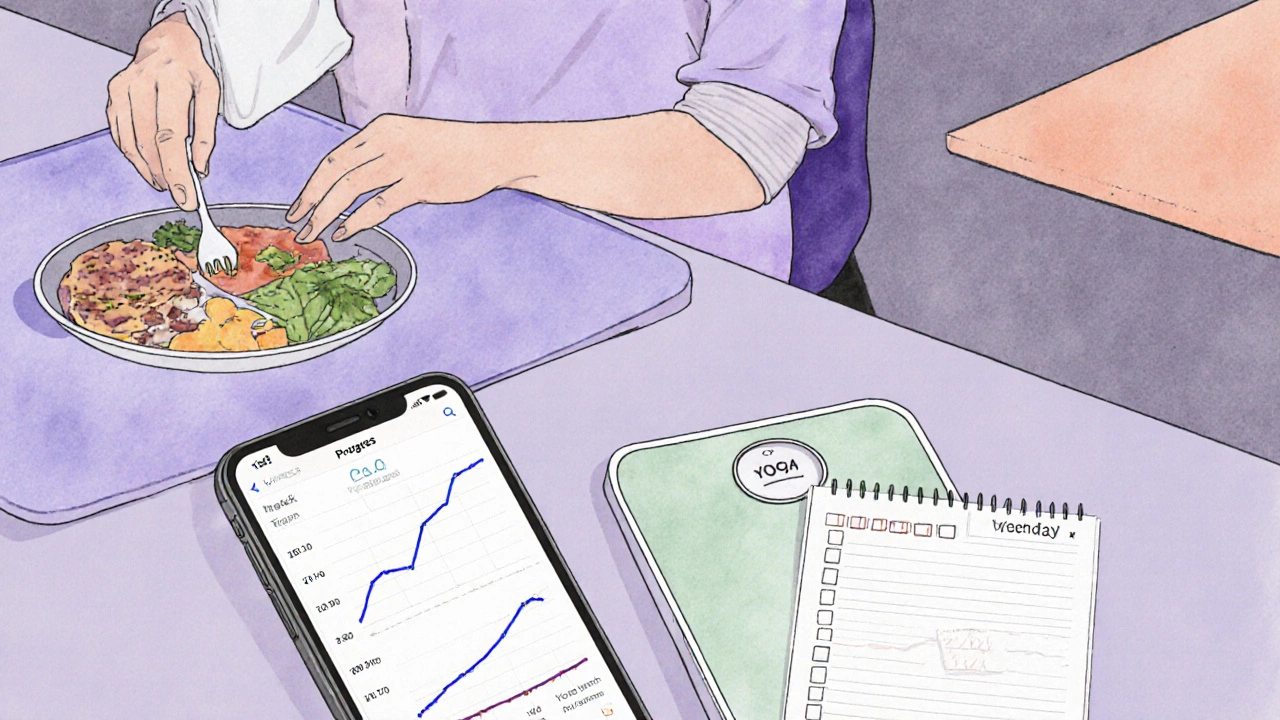Can Fitness Apps Help You Lose Weight? Evidence, Tips & Best Choices

Calorie Deficit Calculator
Your Weight Loss Plan
Why This Works
Based on research, a safe and sustainable weight loss is 0.5-1 kg per week. This calculator helps you create a healthy calorie deficit without compromising your metabolism or energy levels.
Your Personalized Plan
Enter your details above to see your customized plan.
Everyone’s looking for an easy shortcut to drop a few pounds, and the market is flooded with sleek fitness apps mobile applications designed to monitor activity, log meals, and guide workouts. But do they really move the needle on the scale, or are they just another digital distraction? This article breaks down the science, the features that actually matter, and how to pick a tool that aligns with your lifestyle.
Key Takeaways
- Apps that combine calorie tracking with personalized workout plans show the strongest weight‑loss results.
- Behaviour‑change techniques - like goal setting, social support, and streaks - boost adherence by up to 30%.
- Choosing an app that fits your preferred activity (running, strength training, or daily steps) matters more than brand popularity.
- Most free versions are sufficient for beginners; premium upgrades become valuable only when you need advanced analytics or coaching.
- Consistent logging, realistic goals, and periodic reassessment are the three habits that turn data into fat loss.
How fitness apps Influence weight loss
Weight loss hinges on maintaining a calorie deficit - burning more energy than you consume. Apps help in two ways: they make you aware of what you eat and how much you move, and they create feedback loops that reinforce healthier choices.
First, calorie tracking the practice of logging every bite and drink to calculate daily energy intake turns abstract numbers into concrete data. When you log a breakfast of 350 kcal, you instantly see its impact on the daily budget, which often leads to smaller portion sizes later.
Second, many apps integrate step counting automatic recording of steps using phone accelerometers or wearable sensors and heart rate monitoring continuous measurement of pulse to gauge workout intensity. By visualising activity spikes, users can adjust effort to hit target expenditure without over‑training.
Finally, the digital environment adds social and gamified layers - streaks, badges, leaderboards - that tap into intrinsic motivation. Studies show that when users earn a streak of consecutive logging days, they are 22% less likely to skip a workout.
Core Features That Drive Real Results
Not every feature is created equal. Here’s a quick cheat‑sheet of the functionalities that research links to meaningful weight loss:
- Automated calorie database: A searchable food library with up‑to‑date nutrition facts cuts logging time and improves accuracy.
- Personalized workout plan generator: Algorithms that match your fitness level, goals, and equipment availability produce realistic routines.
- Behavioral nudges: Goal reminders, habit streaks, and push notifications keep you on track.
- Social sharing: Peer encouragement through community groups or friend challenges increases adherence.
- Progress visualisation: Graphs that display weight trend, calorie balance, and activity trends help you spot plateaus.
When an app bundles at least three of these elements, users typically lose 1-2 kg per month, compared with 0.5 kg for apps that only count steps.

Scientific Evidence on Effectiveness
A 2023 meta‑analysis of 27 randomized controlled trials (RCTs) involving over 4,500 participants found that digital interventions with calorie logging and tailored exercise recommendations produced an average weight loss of 3.3 kg after six months. Apps lacking a feedback component showed only 0.9 kg loss.
Another RCT published in the Journal of Medical Internet Research compared three groups: (1) a plain step counter, (2) a step counter plus social challenges, and (3) a comprehensive app with calorie tracking, adaptive workouts, and nudges. After 12 weeks, group 3 lost 4.1 kg, group 2 lost 2.0 kg, and group 1 lost 0.8 kg.
These figures line up with the World Health Organization global public‑health agency that sets standards for physical activity and nutrition recommendation of at least 150 minutes of moderate activity weekly combined with a modest calorie deficit.
Choosing the Right App for You
Below is a quick‑look comparison of the most common app categories. Pick the row that mirrors your primary goal and preferred habit.
| App Type | Core Feature | Best For | Typical Pricing |
|---|---|---|---|
| Calorie Tracker | Food database + barcode scanner | Weight‑loss beginners | Free‑to‑use, premium $4‑$9/mo |
| Step Counter & Activity Log | Automatic step sync + simple workouts | Casual movers, walkers | Free, optional $5/mo for advanced analytics |
| All‑in‑One Planner | Calorie + workout + habit nudges | Serious weight‑loss or performance goals | $9‑$15/mo, often with 30‑day trial |
| Social Challenge Platform | Leaderboards + group challenges | People who thrive on competition | Free basic, $6/mo for premium community features |
If you’re new to tracking, start with a pure calorie logger like MyFitnessPal, then graduate to an all‑in‑one solution such as Lose It! or Noom once you’re comfortable with daily logging.

Common Pitfalls & How to Avoid Them
- Inconsistent logging: Skipping meals or workouts breaks the feedback loop. Set a daily reminder at the same time you usually eat.
- Choosing an app with too many features: Over‑complexity leads to abandonment. Stick to the three core functions you need.
- Relying on estimates: Guessing portion sizes inflates calorie counts. Use a kitchen scale or the app’s photo‑recognition tool for accuracy.
- Ignoring non‑scale metrics: Muscle gain can mask fat loss. Track waist circumference and how clothes fit.
- Neglecting rest: Apps that push daily intense workouts can cause burnout. Incorporate at least one rest day per week.
Practical Tips to Maximise Success
- Set a realistic weekly goal (e.g., lose 0.5 kg) and break it into daily calorie targets.
- Log every bite within 30 minutes of eating to improve accuracy.
- Use the app’s “coach” feature to schedule three strength sessions per week - muscle burns more calories at rest.
- Join an in‑app community or challenge a friend; accountability raises adherence by ~25%.
- Review your progress chart every Sunday. Adjust calorie targets if weight stalls for two weeks.
Remember, the app is a tool, not a magic wand. Pair it with solid sleep, hydration, and stress management for the best outcome.
Frequently Asked Questions
Do free fitness apps work as well as paid ones?
For most beginners, free apps cover the essential features - calorie logging, step counting, and basic workout libraries. Premium upgrades become useful when you need custom meal plans, detailed analytics, or one‑on‑one coaching. If you stick to the core habits, a free version can deliver comparable weight‑loss results.
How accurate are the calorie counts in these apps?
Most large databases pull from the USDA FoodData Central or manufacturer labels, which are reliable. Errors arise from user‑entered entries or portion‑size guesses. Using a kitchen scale or the app’s barcode scanner reduces inaccuracies to under 5%.
Can I lose weight without tracking calories?
It’s possible, especially by following structured diet programs or focusing on portion control. However, most people find that visualising calorie intake speeds up progress because it uncovers hidden calories that sabotage a deficit.
What role does behavior change theory play in app design?
Most successful apps embed principles like goal‑setting, immediate feedback, and social reinforcement - all core ideas from behavior change theory. These mechanisms turn short‑term actions into long‑term habits, which is crucial for sustained weight loss.
Is it safe to rely on my phone’s step counter?
Phone pedometers are reasonably accurate for normal walking but can miss steps when the device is left in a bag. For higher precision, pair the app with a dedicated wearable like a Fitbit or Apple Watch, especially if you train outdoors.